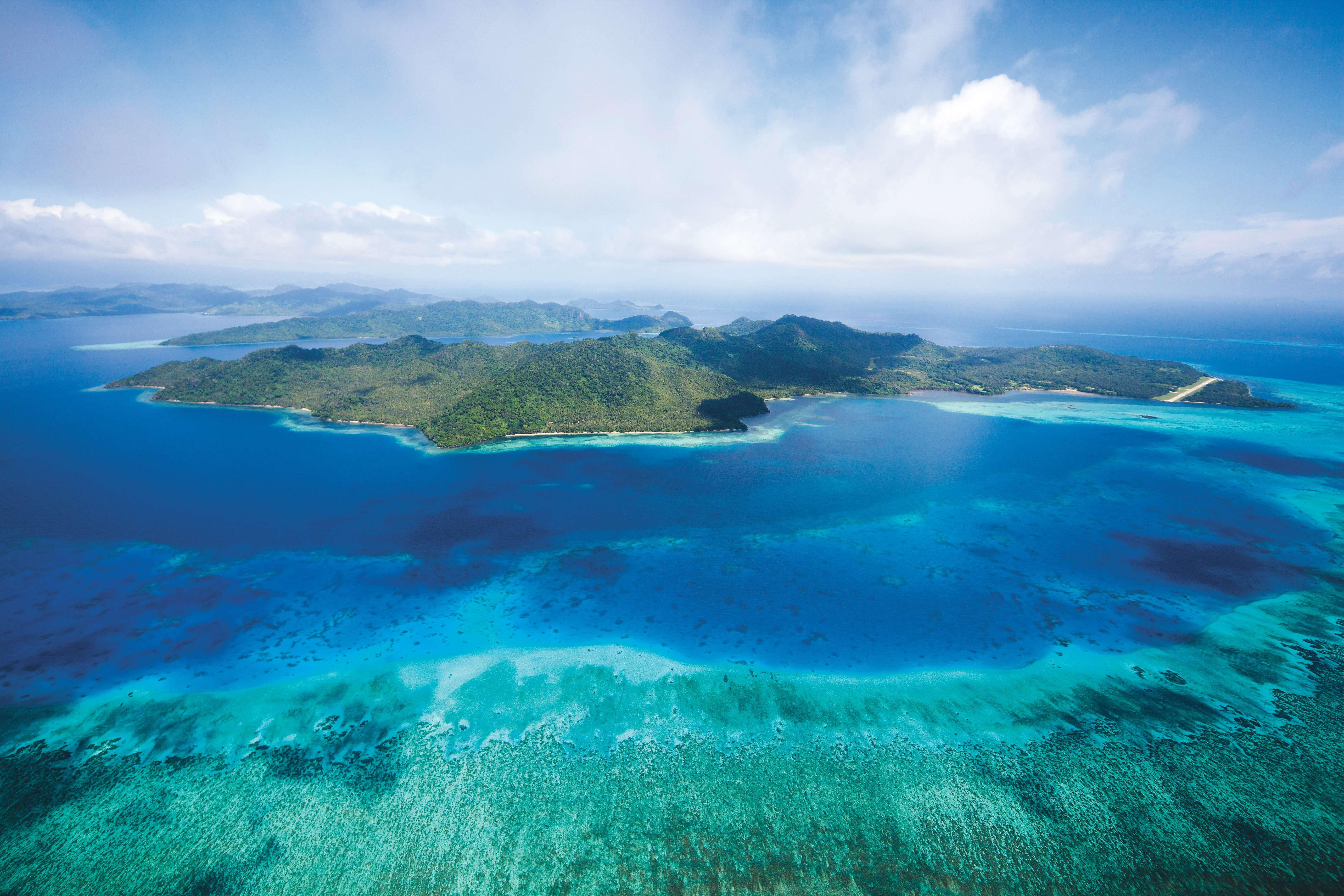
11 minute read
Paradise Perfected
From island idler to active adventurer, Laucala Island raises the bar for a luxury lifestyle experience
Written by Bridget Williams
Laucala Island ruined me. The experience was so unparalleled that throughout the entirety of my stay I was often left pondering the fact that while I felt fully awake, I most certainly must be dreaming. A veritable tropical fantasyland full of architectural, gastronomic, cultural, natural and recreational delights, it will forever be the high water mark by which all of my future travels will invariably be judged.
On a map of the world, Laucala appears as a nearly indiscernible spec nearby the small spec that represents Fiji. Tis is not the kind of place someone comes across by happenstance, but if I were to ever get stranded on a three-hour tour, I’d want it to be here. Volcanic in origin, and ringed by a reef that teems with marine life and keeps the waves nearly as gentle as a kitten lapping up a dish of milk, approximately half of this South Pacifc archipelago, a little more than six miles in length and encompassing 3,500 acres, is comprised of unmolested rainforest not unlike what Dutch sailor Abel Tasman would have encountered when he explored these waters in the 17th century.
Laucala’s fshing grounds are the largest protected fshing area within Fiji.
Disembarking in Nadi following a 15-hour fight, I was thrilled to see a Laucala representative who whisked us through customs so that within 20 minutes we were aboard the resort’s own King Air B 200 for the scenic 55-minute fight to paradise. Fijian employees in traditional attire were waiting to serenade us after touching down on the island’s private airstrip, and though weary with jet lag and the extreme time difference, the music, the fresh coconut water, the pervading smell of lemongrass and the call of tropical birds invigorated us enough to power through the afternoon.
The resort is positioned on the north end of the island. Billionaire owner Dietrich Mateschitz, co-founder of the Red Bull energy drink company, purchased the island in 2003 from the Forbes family and spared no expense in its development (the late Malcolm Forbes was so enamored with the place that he chose it as his fnal resting spot). A mind-boggling array of infrastructure, which includes bottling the island’s own artisanal water that bubbles forth from underground aquifers, allows the operation to be 85 percent self-sufcient.
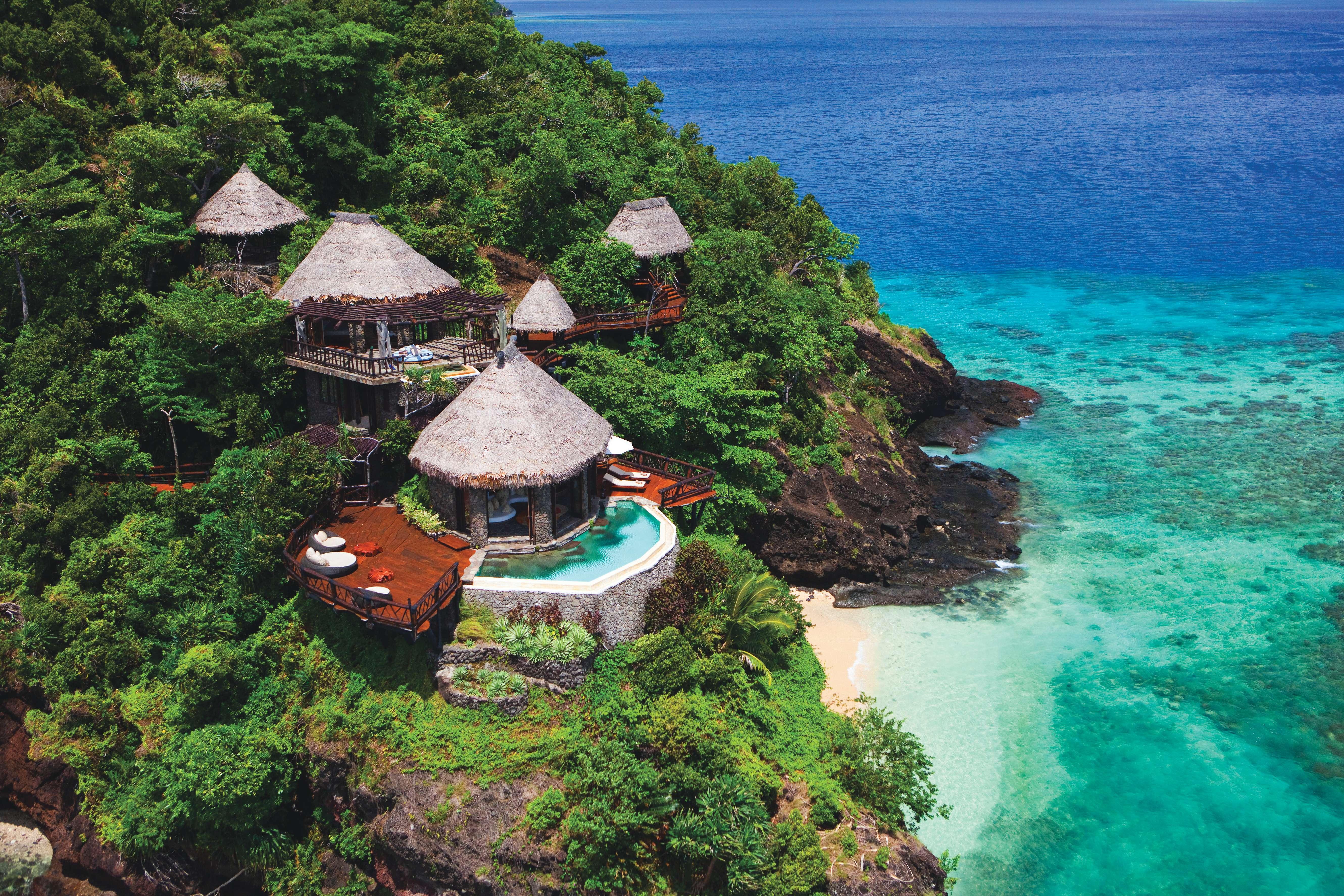
Booking into one of Laucala’s 25 one-, two- and threebedroom villas places you among rarefied company: just 500-600 guests are welcomed to the island each year. Approximately 300 staf are present on the island at any given time, regardless of whether there is one guest or the maximum capacity of 80. It’s the perfect opportunity to pretend to be queen for a day (preferably more).
Each villa features its own pool, lush tropical garden, and spacious indoor and outdoor areas, along with all food and beverage services, chauffeur, nanny, housekeeping, Tao service, laundry and dry cleaning, and both welcome and farewell gifts. Guests are also offered watersports activities (including a DeepFlight Super Falcon submarine – the only resort in the world to boast of such an amenity), boating/sailing, golf, tennis, horseback riding,
slmag.net Plateau Villa with private pool.
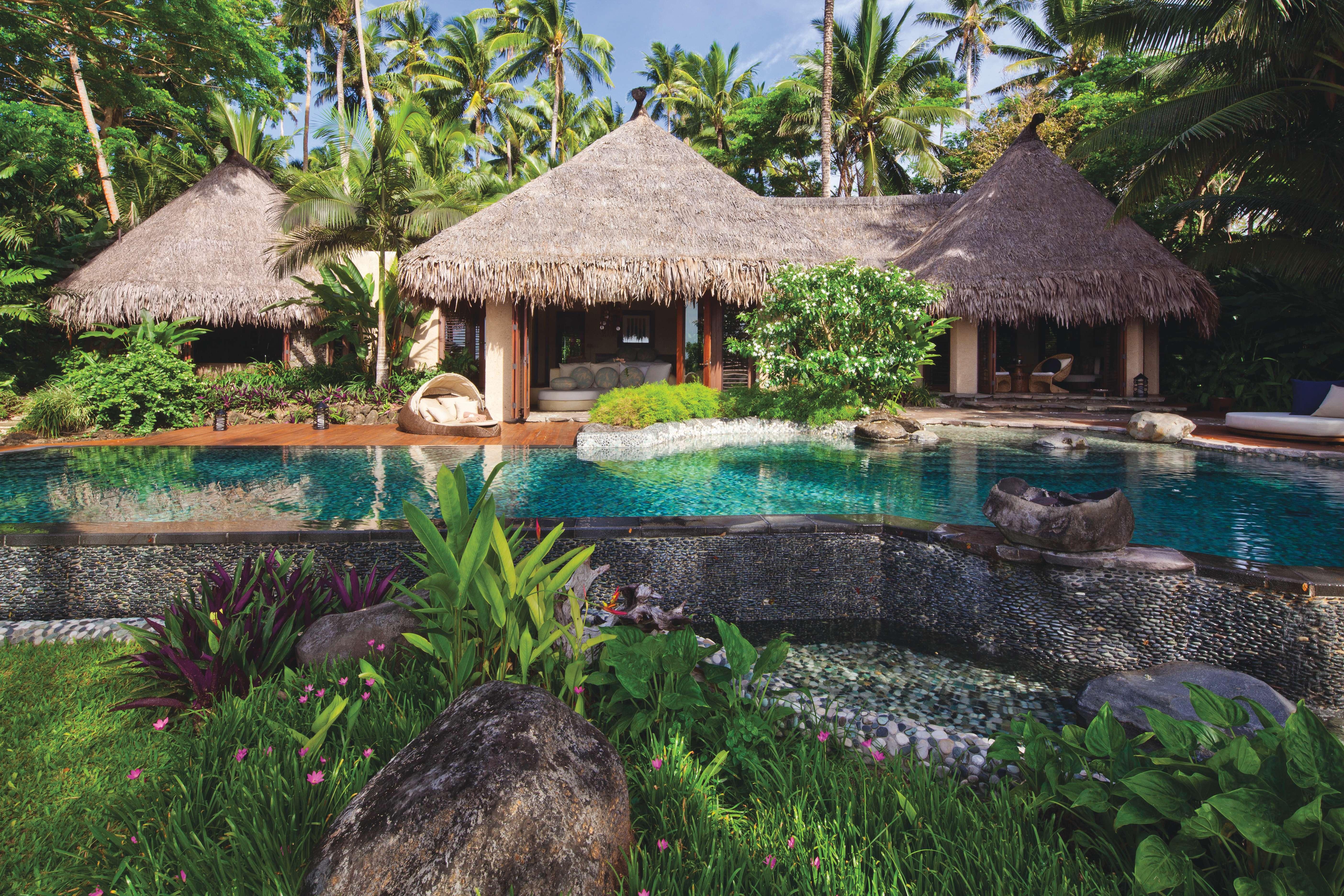
hiking, biking, surfng, fshing and diving as part of their stay. “For someone who is actively minded this place is exceptional, but we can also more than adequately cater to those who want to unplug and do nothing,” explained General Manager Andrew Tomson.
Driving along the cobblestone paths (all meticulously laid by hand) from the landing strip to our oceanfront villa, I marveled at the Seuss-like architecture, which employs natural materials and modern sensibilities with traditional Fijian building techniques; a cultural center, one of the few traditional villages left in Fiji designed to preserve and showcase local traditions, culture and architecture to guests; and, the most amazing resort pool I’ve ever seen, punctuated by a striking glass cube lap pool that appears to float atop the 60,000-square-foot lagoon-style pool, which is separated from the South Pacifc by a thin stretch of powdery beach.
A striking glass cube lap pool appears to foat atop the 60,000-square-foot lagoon-style pool. Photo by Bridget Williams.
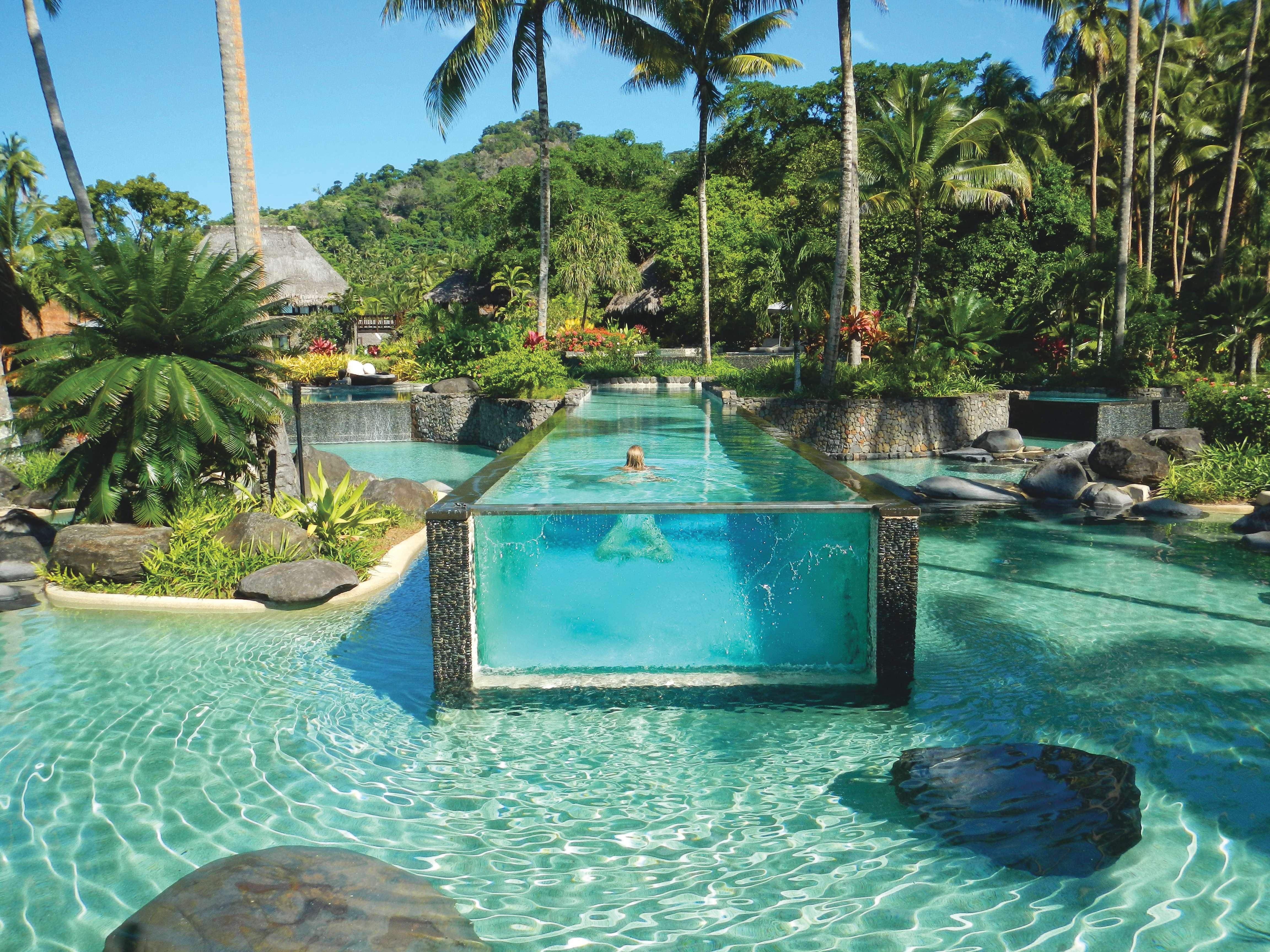
Allow me to be clear: this is no garden-variety all-inclusive resort, and Mateschitz aims to make it one of the top three destinations in the world. Take the food and beverage program for instance. Tere are fve restaurants (ranging from a toes-in-the-sand experience to a gastronomic tour de force one would expect to fnd in a major metro area hotspot), all overseen by afable Executive Chef Anthony Healy, a Brisbane native (the “real” Australia in his words), who has an extensive fne dining background. Having worked on other islands, he was in search of a more land-locked assignment when Laucala came calling with a scenario typically not available to chefs on an island of this size: a plethora of fresh produce and meat. “Tat sealed the deal,” he said.
Healy ofers tours of the 240-acre farm and garden, during which the excitement for his craft and its raw ingredients is certainly palpable. “I love the challenge of trying not to use ingredients if they’re not grown here,” he said. A promised land for foodies from plow to plate, the range of available raw ingredients is staggering: nearly 100 different types of fruits, vegetables, citrus trees and orchids are currently cultivated. While walking around, Healy points out local lemons that certainly won’t win beauty contests but whose intensity of flavor is far superior to their more attractive grocery store counterparts. Tere are 60-80 vanilla plants; wild bananas; Southeast Asian plants such as mangosteen, noni fruit and lychee; and of course lots and lots of coconuts, which are opened and pressed by hand to yield 60-100 liters of milk each week that is used for cooking and in products for the on-site spa. “When in doubt, add coconut milk and cook,” joked Healy.
Lounge and private pool of the Peninsula Villa.
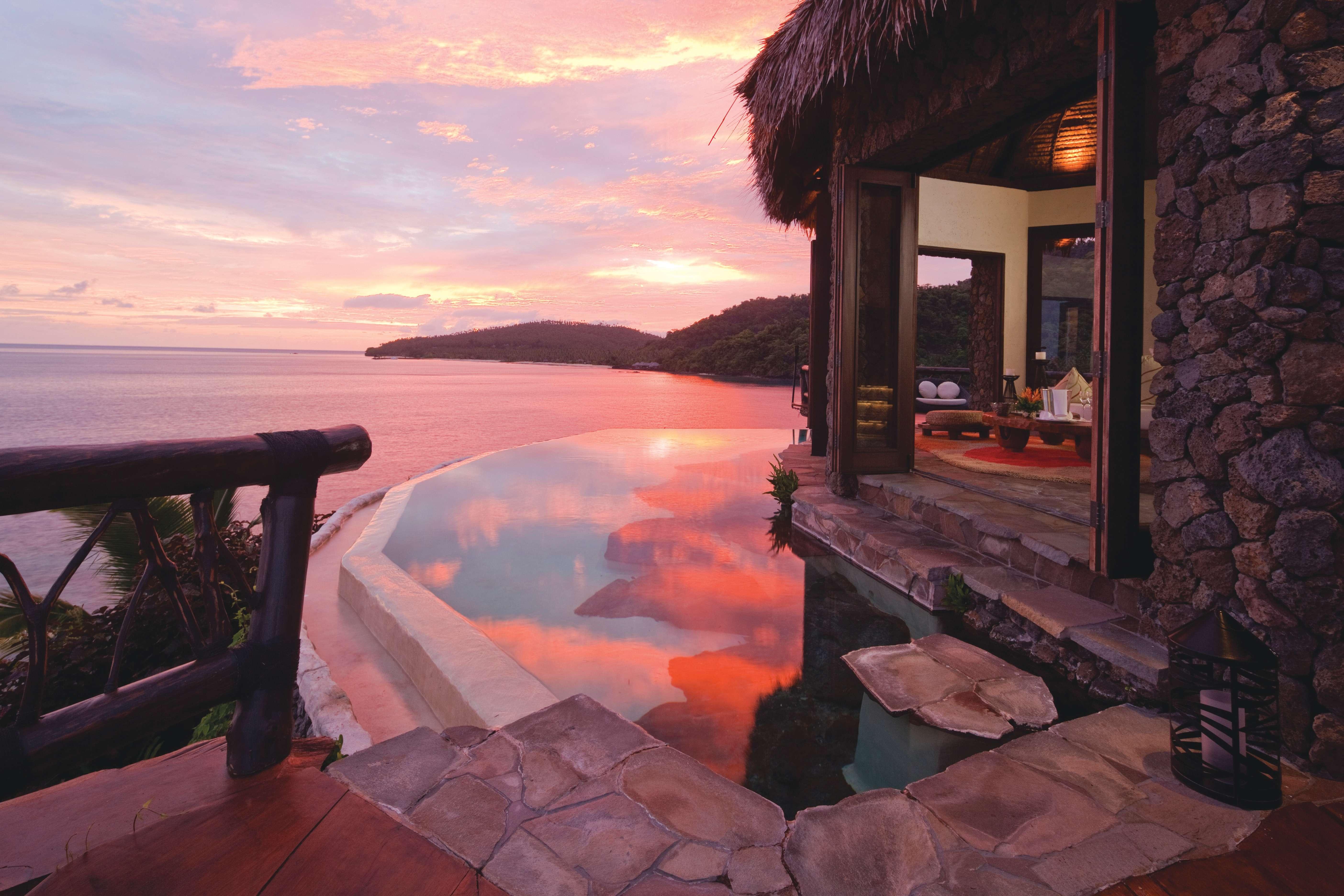
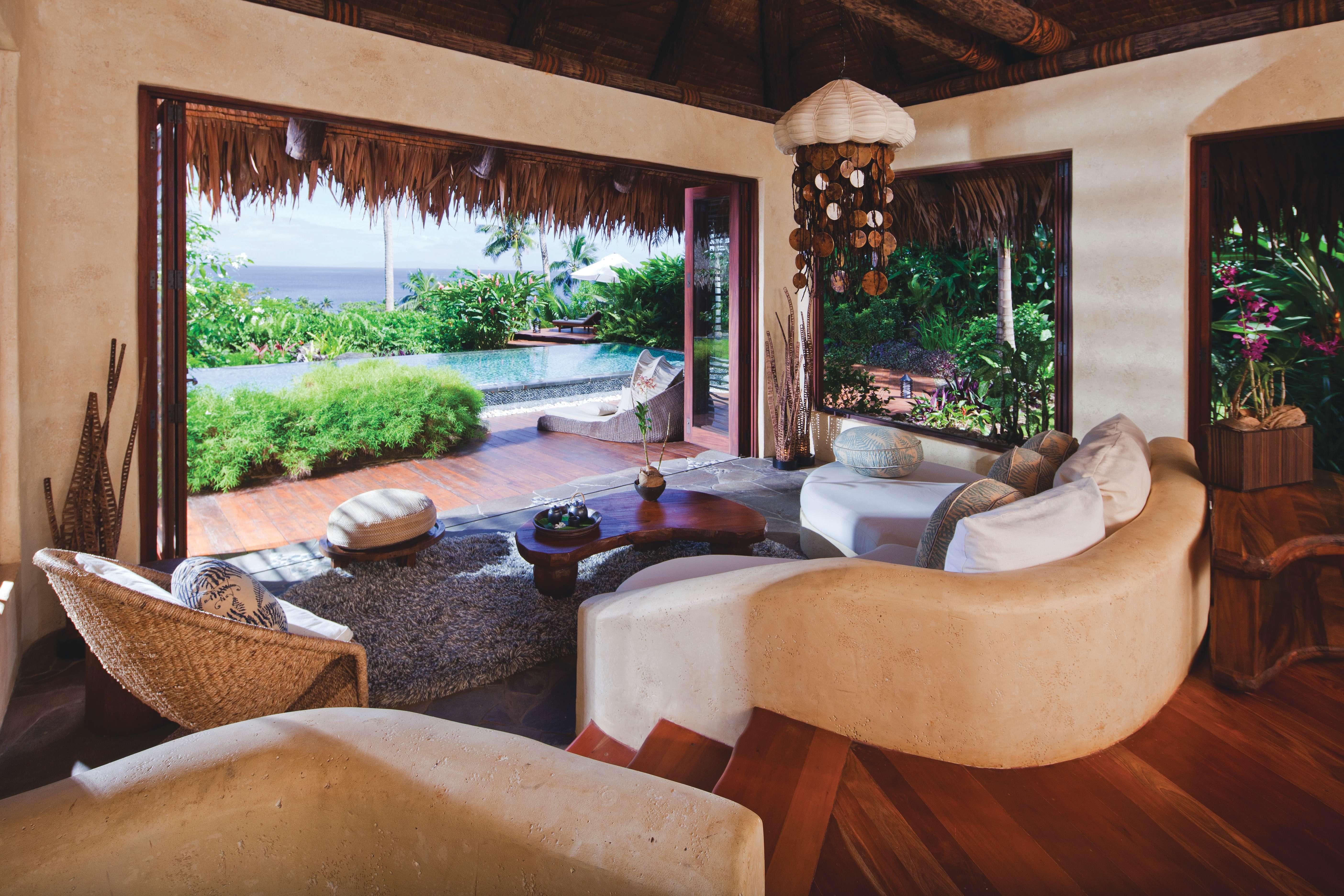

Situated on Nawi Mountain, Plateau Villas ofer an open air foor plan.
Bathroom in the Plantation Villa.
An expansive greenhouse ensures that flowers are always blooming inside and out when a villa is occupied; the orchid room is a truly beautiful sight to behold. Te island’s cattle are a cross breed of Limousin and Hereford. Four head of Wagyu were recently acquired at a cost of $114k to begin a small-scale breeding operation. Chickens, pigs, “Fiji Fantastic” sheep, turkey, quail and duck are also humanely raised on site, and the bounty of the ocean is all around (succulent lobsters are sourced from the nearby reef break that surrounds the island).
An homage to the island’s bounty, the exquisitely plated multicourse extravaganzas Healy offers each evening at the Plantation House are a feast for all of the senses. Chef Healy said that the menu is conceived “spontaneously” each day, so that if you chose to have dinner at that restaurant daily, the experience would be unique each time. Healy calls upon his training in French cooking techniques and “tweaks” them ever so slightly in deference of the tropical climes
to keep each course “fresh and light.” “I never get bored because I’m always experimenting,” said Healy, who often consults with the local kitchen staf on the best way to approach unfamiliar ingredients.
Awaking with the emerging rays of a glorious sunrise, I padded into the adjacent living pavilion to pour myself a glass of freshly squeezed juice from the assortment available in my stocked refrigerator while a pot of cofee brewed (there were also six diferent kinds of wine, rum, gin, vodka and mixers for those who always contend that it’s happy hour somewhere). Properly caffeinated, I proceeded past the pool deck, where plethora of tropical vegetation was in full-fower, and on to a duo of chaise lounges near the water’s edge. The beach had already been groomed; fresh towels and plush pillows were waiting on each of the lounges – mind you, this is six o’clock in the morning.
Fresh from a solid night’s rest, I walked back to the villa to survey the dreamy surroundings. An open-air loggia separated the
Te two-bedroom Overwater Villa appears to foat above the emerald-green lagoon. A large private pool is carved directly into the rocks of the shore.



Te 18-hole championship golf course was designed by David McLay Kidd to be minimally disruptive of the natural environment. Photo by Bridget Williams
Te Beach Bar. Photo by Bridget Williams.
bedroom and bathroom from the living area. Tough the overall feeling is quite contemporary, local materials – Sago Palm leaves, Mangrove wood and stems of the fern tree – and traditional building techniques pay homage to Fijian heritage. My favorite room was the bath, a sprawling octagonal-shaped room with stone walls and foor, a soaring vaulted ceiling with a whimsical chandelier, a deep chiseled stone bathtub and toiletries made on-site and presented in small glass vessels. Even more divine was the second stone tub oriented to face the ocean and located in a covered outdoor pavilion just of of the master bath; combined with the nearby platform daybed, the duo provided the ideal elements for an idyll afternoon.
Other lodging options in addition to the one-, two- and three-bedroom Plantation, Seagrass and Plateau villas include the exclusive luxury afforded by the one-bedroom Peninsula “Udu” villa, which is perched atop a rock overlooking the ocean with a pair of infnity clif-edge pools and a staircase down to a beach only accessible by villa guests; the two-bedroom overwater “Wai” villa that boasts a saltwater pool directly carved out of the volcanic rock; and the hilltop “Delana” estate, a three-bedroom house situated on the highest point of the resort with 360° panoramic views.
After a breakfast of local fruit and eggs, I made my way to the golf course to see if I could run the paths. My past experience at other resorts has largely been that such a request is frowned upon, but not only was I welcomed to explore, I was asked if I’d like someone to meet me at the halfway point with refreshments! Though Mateschitz is not a golfer, he understands that such an amenity is key to a world class resort, and his main request of Scottish designer David McLay Kidd was to cut down as few trees as possible when building the 18-hole championship course. Not encountering another soul throughout the duration of my run, I
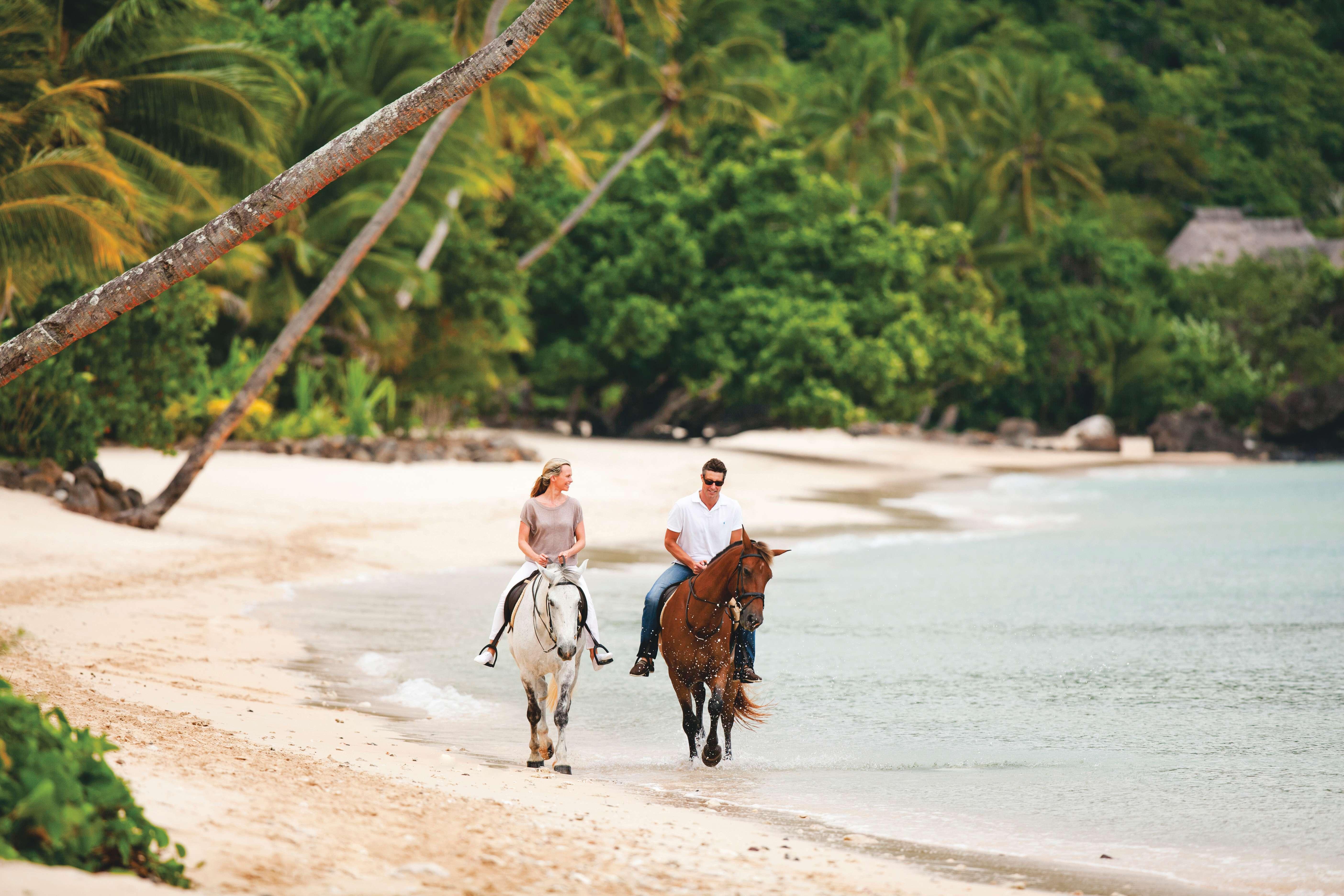
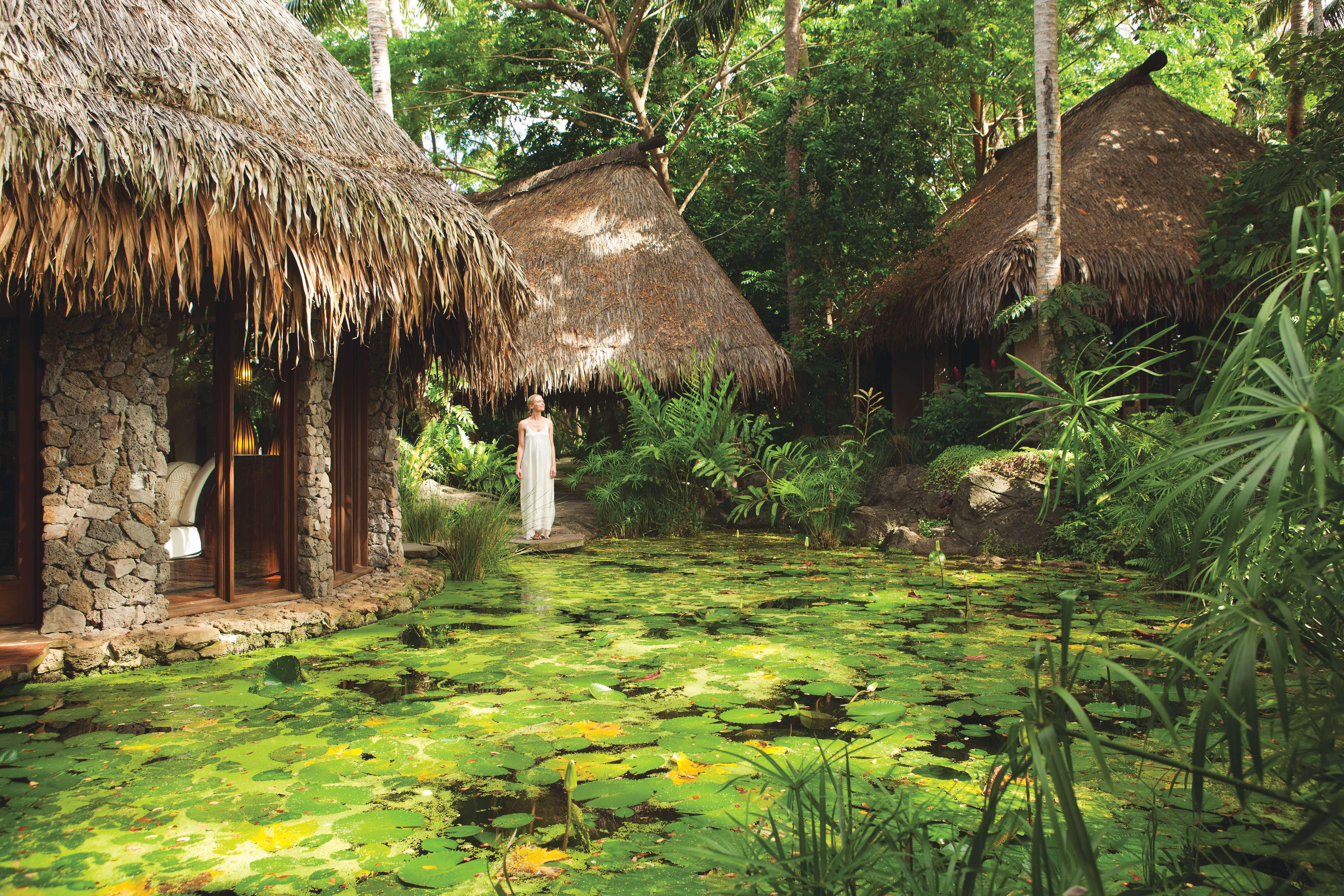
Te Spa is located in the quiet Plateau area of the resort.
Laucala maintains a feet of watercraft for pleasure and sport cruises.
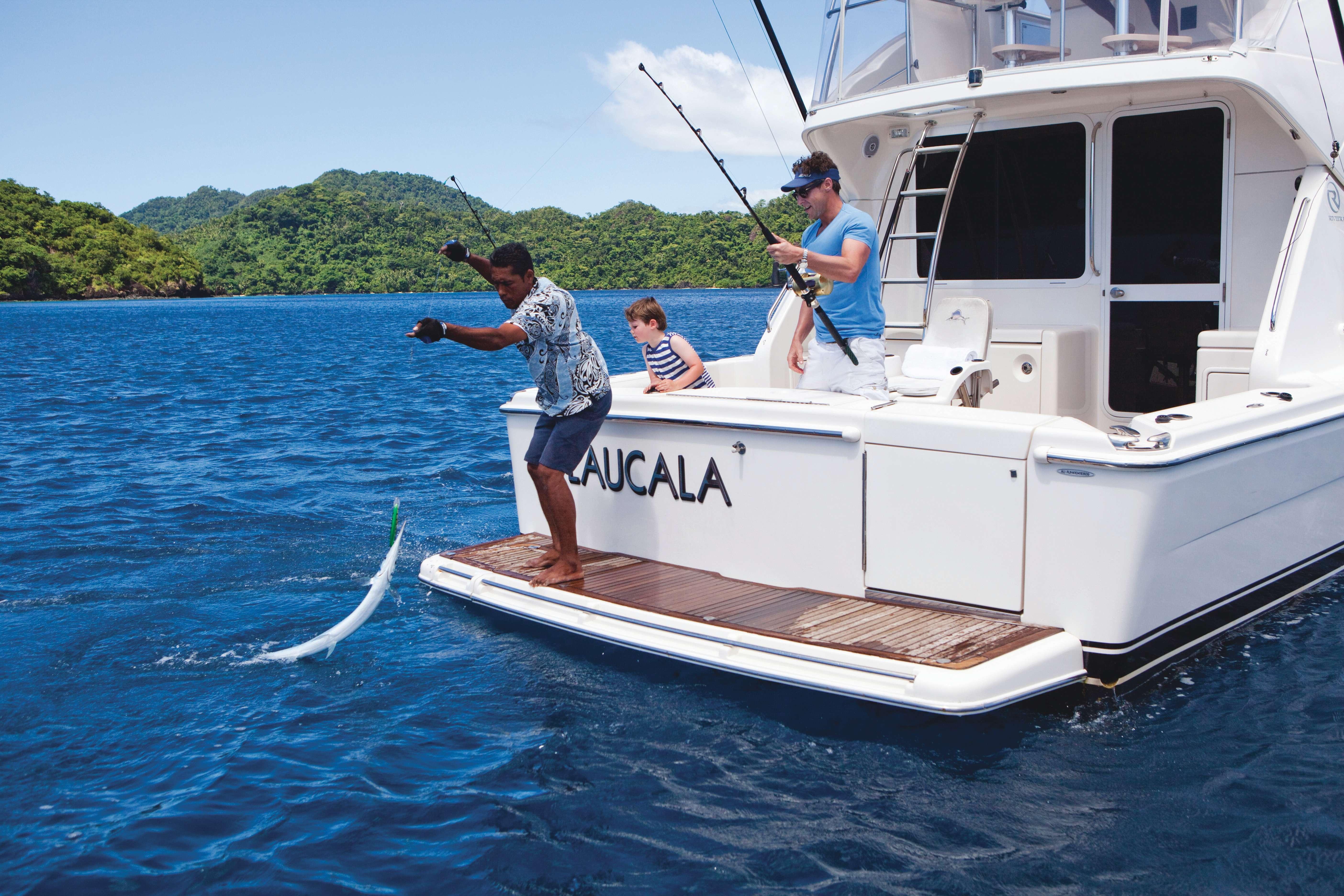
have to say the experience certainly ranked as one of my all-time favorites. Te course follows a spectacular route, up and around natural rock formations, alongside the ocean and into the old plantation and more forested areas.
Te range of available activities is extensive; too many even for a type-A person like me to tackle in a week. With the exception of diving and fishing excursions further afield, everything is complementary, including trips on “Amanda,” a Dragon Class sailing boat built in 1965, jet skiing, water skiing and paddle boarding. All guests are entitled to their choice of one 90-minute treatment in the spa from the comprehensive treatment menu of massages, facials, manicure/pedicure, body scrubs and body wraps. Set within the quiet Plateau area of the resort and surrounded by dense tropical vegetation, the area is the epitome of a relaxing oasis. A spa kitchen uses locally grown herbs and flowers to whip up various oils and lotions used in treatments.
The sheltered, serene environment staffed by locals whose hearts are as big as their smiles also provides children with endless opportunities to create their own unique memories and experiences,
Lunch at the Beach Bar sourced from the island's own farm. Photo by Bridget Williams.

from all of the aforementioned activities to handicraft classes at the
cultural center to cooking classes with Chef Healy, horseback riding
and nature hikes.
Having enjoyed degustation dinners in the Plantation
house and Thai-inspired cuisine at the Seagrass Lounge
throughout our stay, and following our evening ritual of
saluting the sunset with a creative cocktail at the Rock Lounge,
to celebrate our last night on the island in grand fashion we
arranged for a beach barbeque to be prepared on the terrace
outside our villa. A bounteous feast from land and sea, we didn’t
think the night could get any better until a troupe of performers
arrived to entertain us with traditional Fijian melodies while we
sprawled out by the bonfre set up on the beach and admired the
thousands of stars sparkling like diamonds against the jet black
sky. I couldn’t help but ponder that the dreamy setting gave the
notion of counting my lucky stars a whole new meaning.
Rates at Laucala Island begin at $4,200/night for a one



